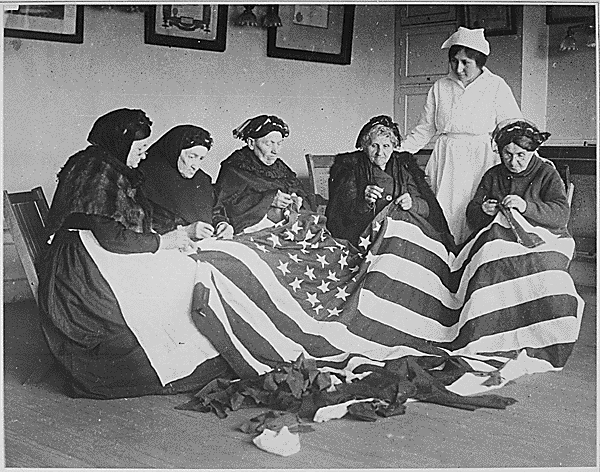- Author:
- Chris Adcock
- Subject:
- English Language Arts
- Material Type:
- Lesson Plan
- Level:
- High School
- Grade:
- 11
- Tags:
- License:
- Creative Commons Attribution Non-Commercial
- Language:
- English
Discussion Protocol
Grade 11 Discussion Rubric
Productive Discussions

Overview
In this lesson, students will contribute to a conversation about what makes a good discussion and discuss with their classmates the ideas in the historical documents they have read so far.
Preparation
- Read the lesson and student content.
- Anticipate student difficulties and identify the differentiation options you will choose for working with your students.
- Plan for the transitions into and out of the discussion. Make sure you know how you want the class to move from one activity to the next. A timer can be particularly useful.
Reflection on Productive Discussions
The purpose of this Quick Write is to help students think about how they can have a productive group discussion.
Call on several students to share, and as they do, highlight the qualities that lead to more productive discussions: listening, taking turns, acknowledging what the other person has said, respect; and also what leads to unproductive discussions—criticism, talking over each other, etc.
- SWD: Some students need more help than others in establishing a sense of which behaviors are conversation starters and which are conversation stoppers. If necessary, provide these students with additional small group or one-on-one discussion time before the class discussion.
Opening
Think back to conversations you have had that were particularly productive or unproductive. Reflect on these questions in your Notebook.
- What behaviors led to the conversations being productive or unproductive?
- Compile two lists:
- Behaviors you see as “conversation starters”
- Behaviors you see as “conversation stoppers”
Sentence Frames and Rubric
Segue from the students' experiences to the norms for productive and respectful class discussions.
Look over the sentence frames and rubric with your class. If your students have a lot of experience with class discussions, you may not need to spend very much time on these; if your students are new to class discussions, it's worth looking closely at the rubric.
Work Time
Review the discussion protocol, sentence frames, and rubric with your teacher. Ask any questions you have.
Discussion Preparation in Pairs
For the first discussion, especially if your students are not yet proficient at class discussions, it's worth spending more time on preparation than on the discussion itself. Circulate to make sure that all students are engaging with the ideas during the preparation period, and let the discussion itself be brief.
- SWD: Validate students' ideas as you read over their shoulder or listen in as they talk with a partner and help them identify ideas that they could share with the class. Encourage them to make a note of what they plan to say.
Work Time
Take a few minutes with your partner to work on the Discussion Preparation sheet.
- Try to figure out textual references (quotations) that can help you answer these questions.
Whole Group Discussion
In a large class, it can be useful to have a “fishbowl” discussion, with about eight students discussing in an “inner circle” and the rest of the students as observers in the “outer circle.” If possible, given your classroom configuration, it's helpful to actually create two concentric circles with desks.
- ELL: Depending on their confidence and proficiency, ELLs may feel strongly about either wanting to actively participate in the discussion or preferring to avoid the spotlight. Gauge your individual students to determine how best to support them.
You can assign specific tasks to students in the outer circle so that they can help the class reflect on the discussion.
For the first discussion, you may need to play a fairly active role as facilitator; the goal for discussion later in the year will be to step back and let the students run the discussion themselves.
Work Time
Follow your teacher’s instructions to begin the discussion.
Discussion Quick Write
If there's time, hear a few responses.
- ELL: This Quick Write can be a good opportunity to check in with ELLs and gauge their attitudes toward class discussions. Even if they did not participate this time, encourage them to think about how they might do so later on.
Closing
Write your response to these questions.
- What did you, individually and as a class, do well during this discussion?
- What could be improved next time?
Independent Reading Group Prep
Remind students that they will meet with their reading group in the next lesson.
Homework
Make sure you are caught up in your Independent Reading work.